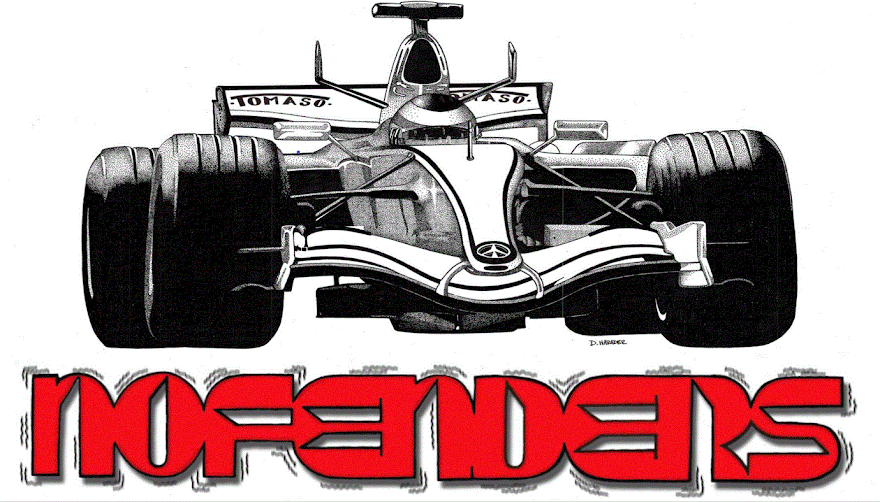Even if it’s not called the Road to Indy anymore,
Thanks Roger!
Yeah, like many stories here upon thoust
mythical Isle ‘O Nofendersville, the genesis of this post began Wayback’ some
five years ago, following the conclusion of the inaugural 2018 FR Americas
Championship…
As it used to be much simpler when it was still
the Road to Indy, with the entire Junior Open Wheel Racing ladder system
underneath “One” umbrella. But that All changed when IndyCar bought Indy Lights
from Anderson Promotions at the end of 2021. With the three rebranded series
under USAC sanctioning becoming the USF Pro Championships.
Longtime rubber supplier Cooper Tires has been
replaced by Continental Tires beginning this season. And with their aid, the
three scholarship advancement prizes have been increased for 2024.
USF Juniors now pays out $263,700 to the
champion. With the U.S F2000 National Championship victor receiving $458,400.
And the USF Pro 2000 series winner nests a “cool” $681,500!
USF Juniors
This series was created as a direct competitor
to the SCCA Pro Racing’s United States Formula 4 Championship, presumably to
fill the USF Pro Championships “Hole” between Karting and it’s then entry
single seater U.S. F2000 National Championship series. And now serves as the
entry level of this single seater racing ladder.
The schedule consists of six round beginning at
Nola Motorsports Park in New Orleans. (April 5-7) Along with being part of the
IndyCar support series at Barber Motorsports Park, Mid-Ohio, Road America and
Portland, which serves as it’s season finale. Plus taking part in the VIR Grand
Prix at Virginia International Raceway.
The series is open to 14yr old teenagers and up
and utilizes the Tatuus JR-23 chassis, which can be upgraded for continued
usage in both of it’s “parent” feeder series.
The series inaugural champion was Mac Clark,
who’s currently contesting His rookie season with DEForce Racing in the USF Pro
2000 championship.
While last year’s champion was Brazilian
teenager Nicolas Giaffone, who indeed is the son of former Indy Racing League
(IRL) driver Felipe Giaffone. As Felipe is best known for driving for A.J. foyt
enterprises in the Indianapolis 500.
With His $260,000 (approx.) scholarship prize, Nicolas
has graduated to the next rung of this ladder system, and will contest the U.S.
F2000 National Championship, continuing with DEForce Racing this season.
U.S. F2000 National championship
The series race at eight venues, primarily as
part of the IndyCar “Junior” Open Wheel Racing support series, beginning the
season at St Pete, florida from March 8-10.
Their second event was the triple header at
Nola Motorsports Park at the beginning of April. Before a Double Header at
Indianapolis Motor Speedway’s )IMS) permanent road course at the beginning of
May.
There’s also a “One-off” event at Lucas Oil
Raceway in Brownsburg, Indiana. With the Freedom 75 precluding this year’s
Indianapolis 500. Followed by stops at Road America, Mid-Ohio, Toronto and
Portland as it’s season finale.
The series utilizes the current Tatuus USF-22
racecar, powered by the former Mazda MZR 2.0-liter naturally aspirated engine
built by elite Engines. Which is run by Steve Knapp, a former IRL racing
driver, who was the 1998 Indianapolis 500 rookie Of the Year. (ROY)
Reigning series champion Simon Sikes took His
$450,000 (approx.) scholarship prize and advanced to the USF Pro 2000
Championship with Pabst Racing, whom He won His USF2000 title with.
USF Pro 2000 championship
This is the final rung upon the USF Pro
Championships ladder system ascending to Indy NXT, the final step prior to
IndyCar.
As the series has increased this year’s
winner’s scholarship advancement prize to $681,500, which Ain’t too Shabby!
Especially when you consider the miserly Penske Entertainment Indy NXT award of
$850,000. For which reigning Pro 2000 driver Myles Roe has graduated to this
season…
Wisely, the series utilizes a Tatuus single
seater racecar for All three series, which reportedly are “interchangeable”,
saving teams operating costs. With the USF Pro Championship series racing the
Tatuus IP-22 powered by the same Elite Mazda sourced MZR 2.0-litre inline four
cylinder lump’ used in all three series.
Top speeds vary, with the entry USF Juniors
Tatuus JR-23 racer going 135mph. While the JSF-22 goes 145mph, and the IP-22
tops out at 165+ mph.
This season’s schedule mirrors the U.S. F2000
National Championship’s eight events, beginning at St Pete and ending at
Portland. Although it’s weekend’s rounds vary slightly over the course of it’s
18-race calendar. With the season finale at Portland being just a single race,
which could make for an interesting title showdown.
At the moment, prior to the Indianapolis Road Course triple header May 9-11, Nikita Johnson handedly leads the championship with 141-points, having scored three wins, a second and fourth place finish at St Pete and Nola Motorsports Park.
